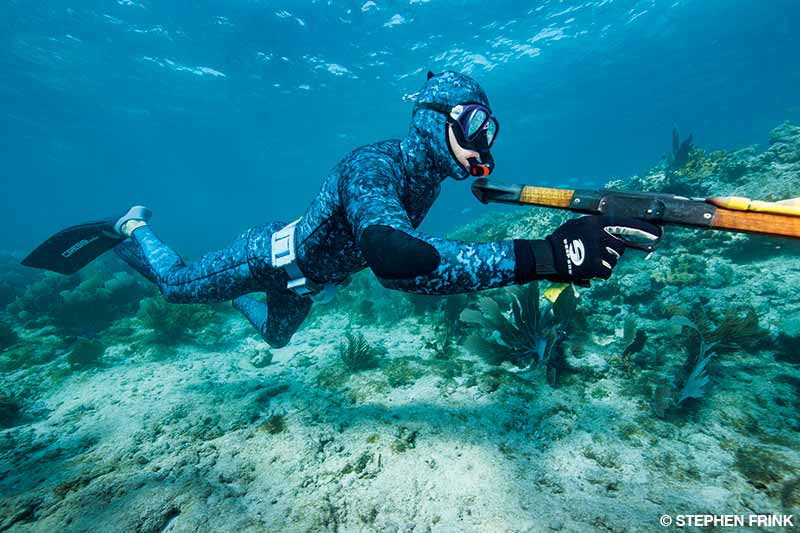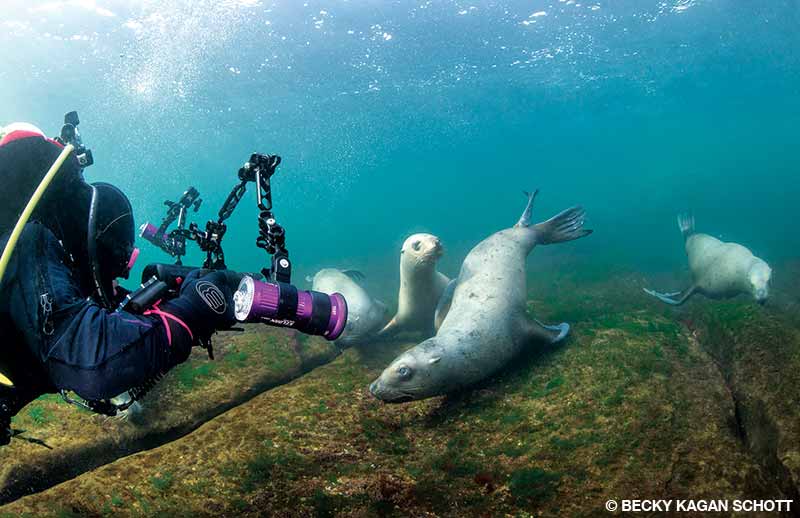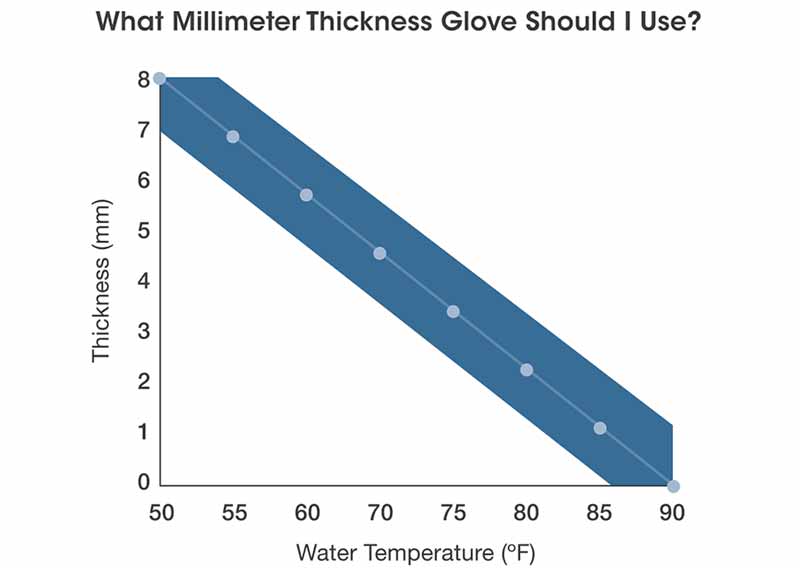Gloves are one of the most overlooked and individualized pieces of dive equipment. When choosing gloves, consider the kind of diving you plan to do and what you expect from your hand protection. The following are some factors to consider when selecting gloves.
Thermal Protection and Fit

Thermal protection is a significant factor to consider in glove selection. When diving in frigid water, you want gloves that will prevent hypothermia, but you may want a thinner glove or even no gloves in warm water. In general, the thicker the glove, the better the thermal protection.
Here are some commonly accepted facts about thermal hand protection:
- Diving with gloves is warmer than diving without gloves.
- Dry gloves are warmer than wet gloves.
- Three-finger mittens are warmer than five-finger gloves.
- More neoprene is warmer than less neoprene.
Proper fit is paramount. Gloves that are too big will allow water to freely flow in and out and may not provide adequate thermal protection, although you may attempt to adjust fit through tighter seals or Velcro straps around your wrists. Gloves that are too small may restrict blood flow to your hands, which can somewhat negate the protection from the outside elements.
Dexterity
The more neoprene that’s around your fingers and the bulkier or stiffer your gloves are, the more difficult it is to communicate with hand signals or writing. It can also be challenging to operate your equipment, such as inflating and deflating your buoyancy compensator, opening and closing pockets, clipping and unclipping items, deploying a light or spool, or pushing buttons on your dive computer. The best way to become more comfortable with gloves is to train while wearing them so you can be prepared for whatever water conditions you encounter.

It is helpful to familiarize your hands and brain with manipulating objects with your gloved hands. You can acclimate your hands even while sitting at your desk by typing, drinking coffee or writing on a notepad while wearing the gloves you plan to take underwater. This practice will train the muscles and limit the surprise of intricate movements underwater when you need to use your hands.
Hazard Protection and Impact Resistance
Gloves also provide hazard protection. Dangers can include contaminated water (e.g., from petroleum products, oils or solvents), hazardous marine life, and sharp objects or edges such as those on corals or wrecks. Gloves may also prevent skin damage when dive conditions require that you hold on to something or pull yourself against flow or current.

Materials
Dive gloves come in a variety of materials: textile, neoprene, rubber or latex. Each material has an intended use. Neoprene dive gloves are the most common and come in thicknesses ranging from 0.5 mm for tropical waters to 7 mm for cold water. These gloves can also provide additional grip with slip-resistant materials that coat the palm and fingers. Neoprene gloves may come as five-finger gloves or three-finger mittens; both styles have their advantages and disadvantages but are generally highly durable and tear-resistant.
Divers who hunt, collect or spearfish often use textile gloves. The palms of these gloves often have latex or rubber to provide better grip and protection against sharp objects. While textile gloves grant you high dexterity and adequate hazard protection, they do not provide much thermal protection.
Dry gloves are an option with drysuit diving. Usually made from flexible polyvinyl chloride (PVC), these gloves provide a protective shell over textile or thin neoprene gloves. Ring systems or seals usually attach dry gloves to the drysuit. Dry gloves should have a venting connection (e.g., tissue, fabric or a small hose) to the drysuit so gas can travel freely between the glove and suit to prevent your hands from being squeezed while descending or having balloon gloves on the ascent.

No Gloves Allowed
Some locations such as the Great Barrier Reef prohibit divers from wearing gloves. Two considerations are generally behind these regulations: Some divers who wear gloves erroneously think it is OK to touch things underwater, and gloves often give people a false sense of security that they cannot be harmed by touching coral or other marine life. You might still be injured even with gloves on, for example, if a cone snail’s sting penetrates through a glove too thin to protect you. There is also the risk of causing significant harm to marine life by touching it.
There is no one-size-fits-all type of glove, and your choice depends on individual preference. Consider the kind of diving you plan to do and how well you tolerate cold. Evaluate to what extent you are willing to compromise warmth, dexterity and comfort to find a combination that works for you.
With the ease of online shopping, it is tempting to order five pairs of gloves, see which ones work and return the others. To benefit the dive community and the planet, however, visit your local dive shop or have a professional help you find the gloves that are right for you.
© Alert Diver — Q2 2021